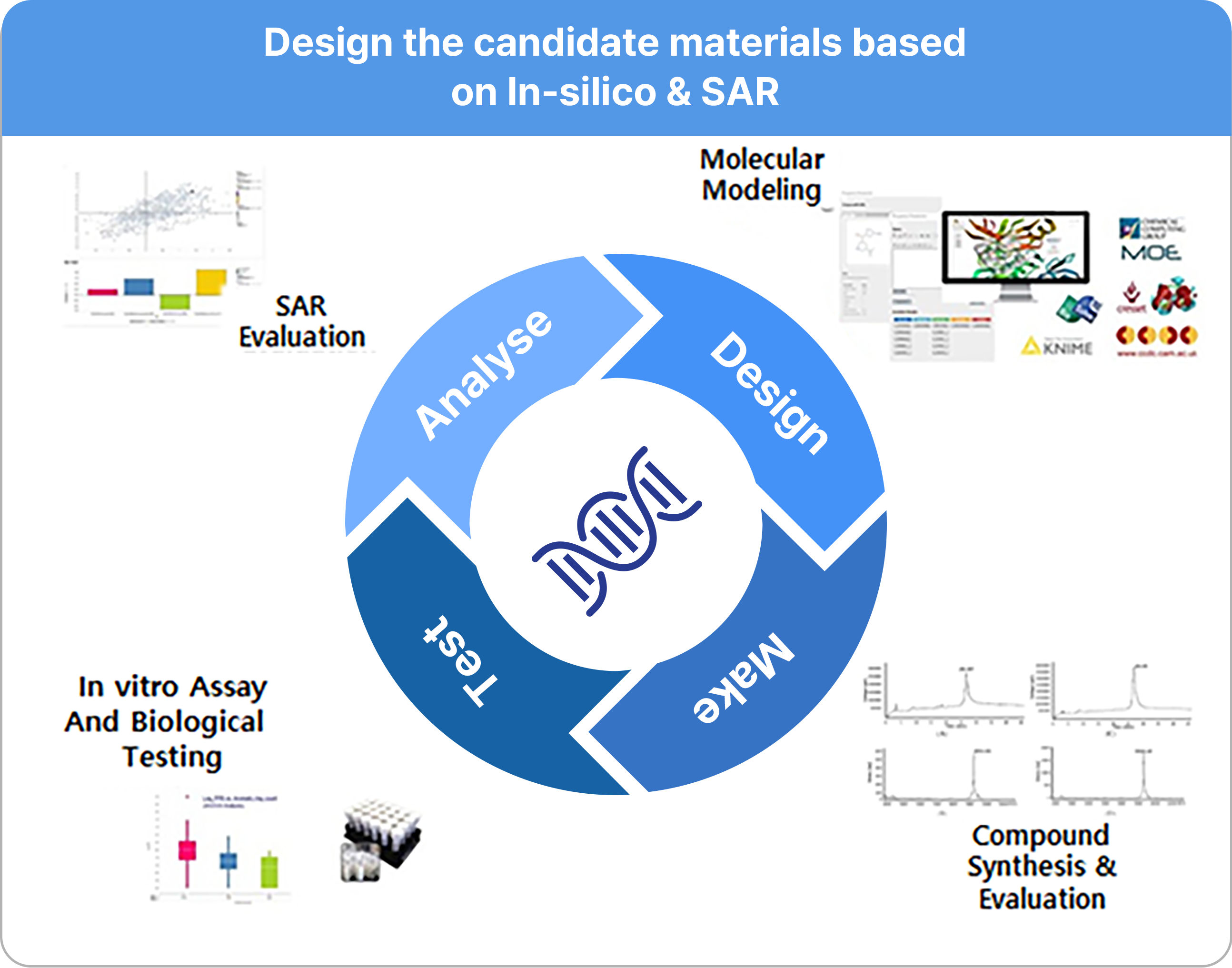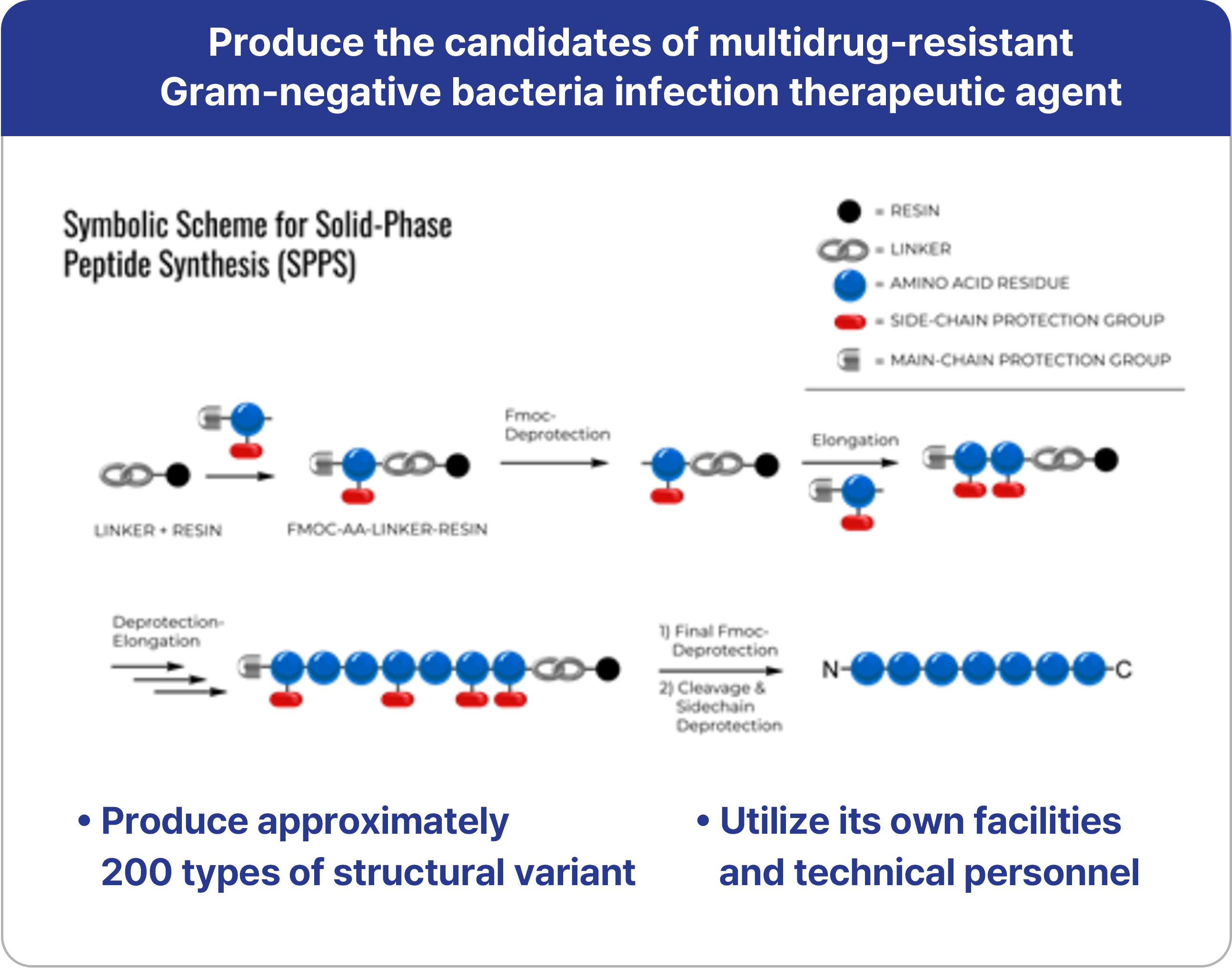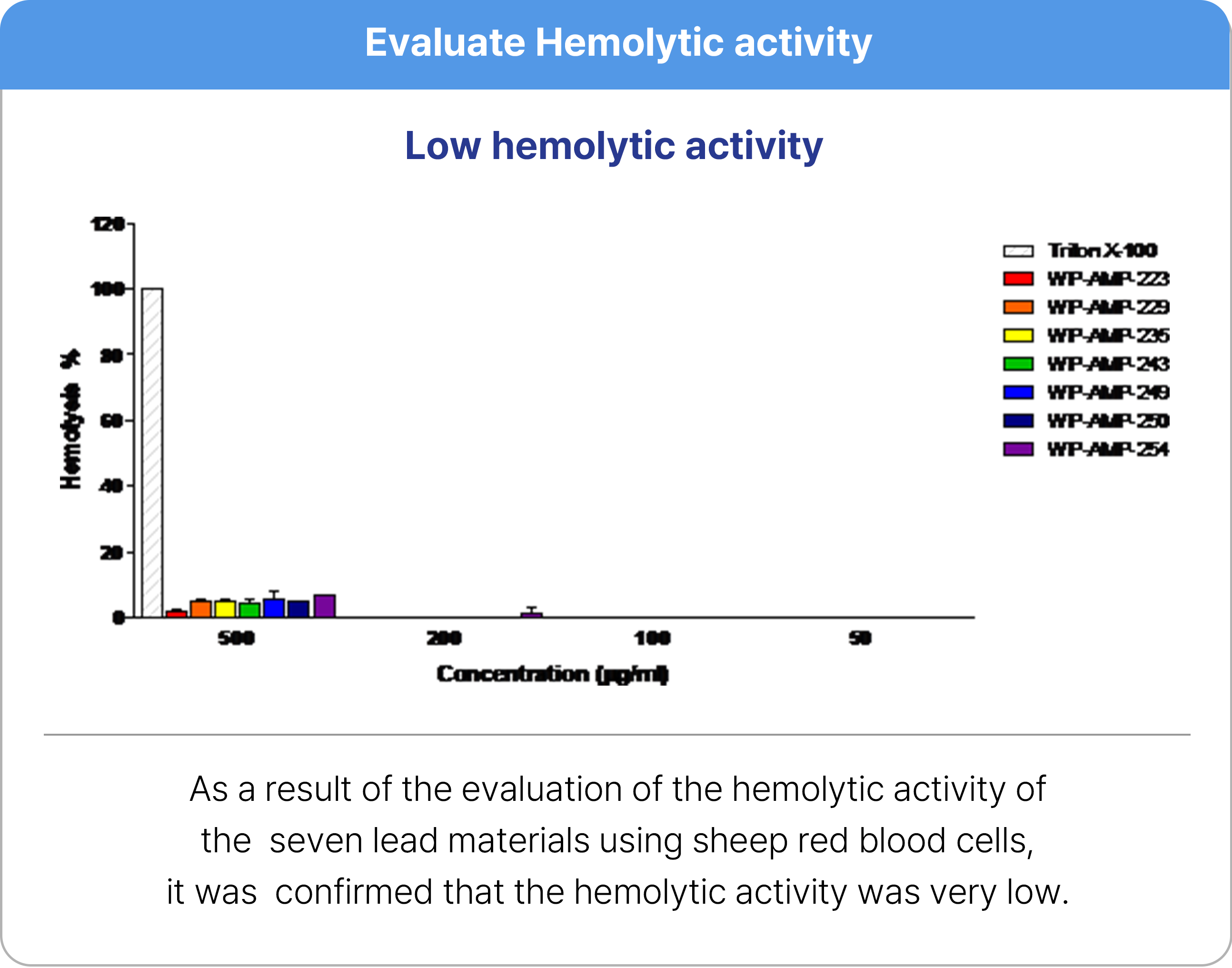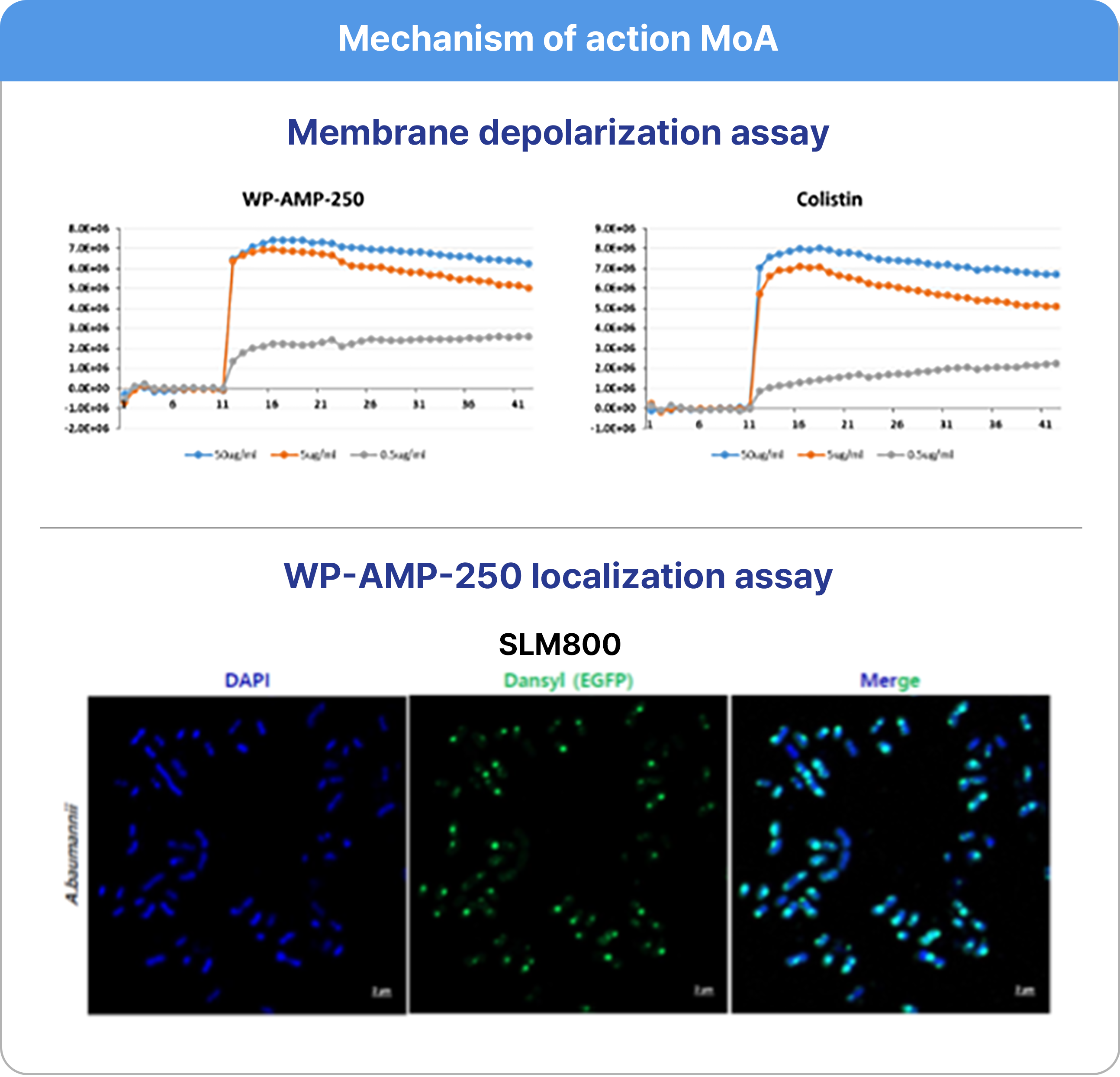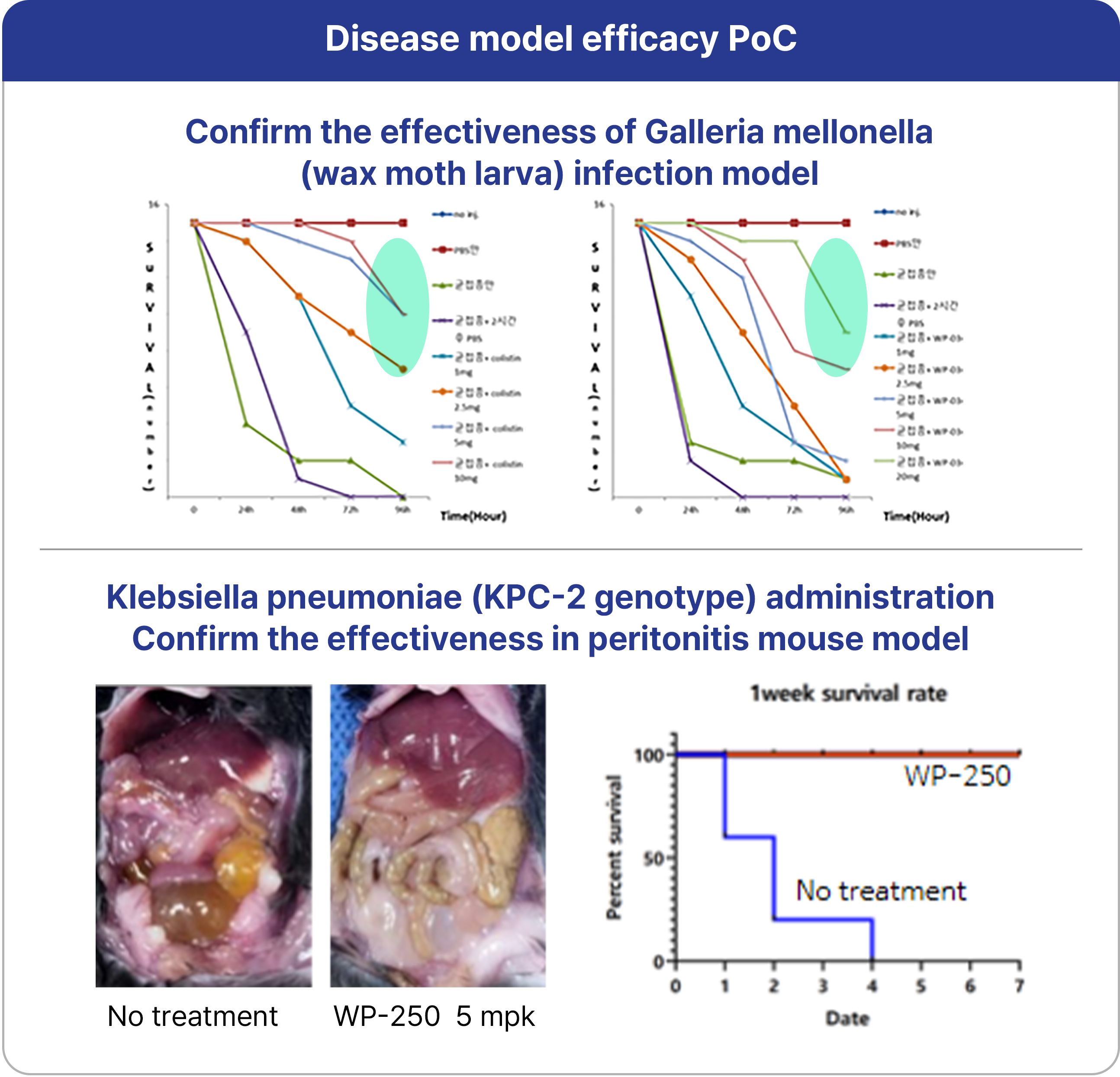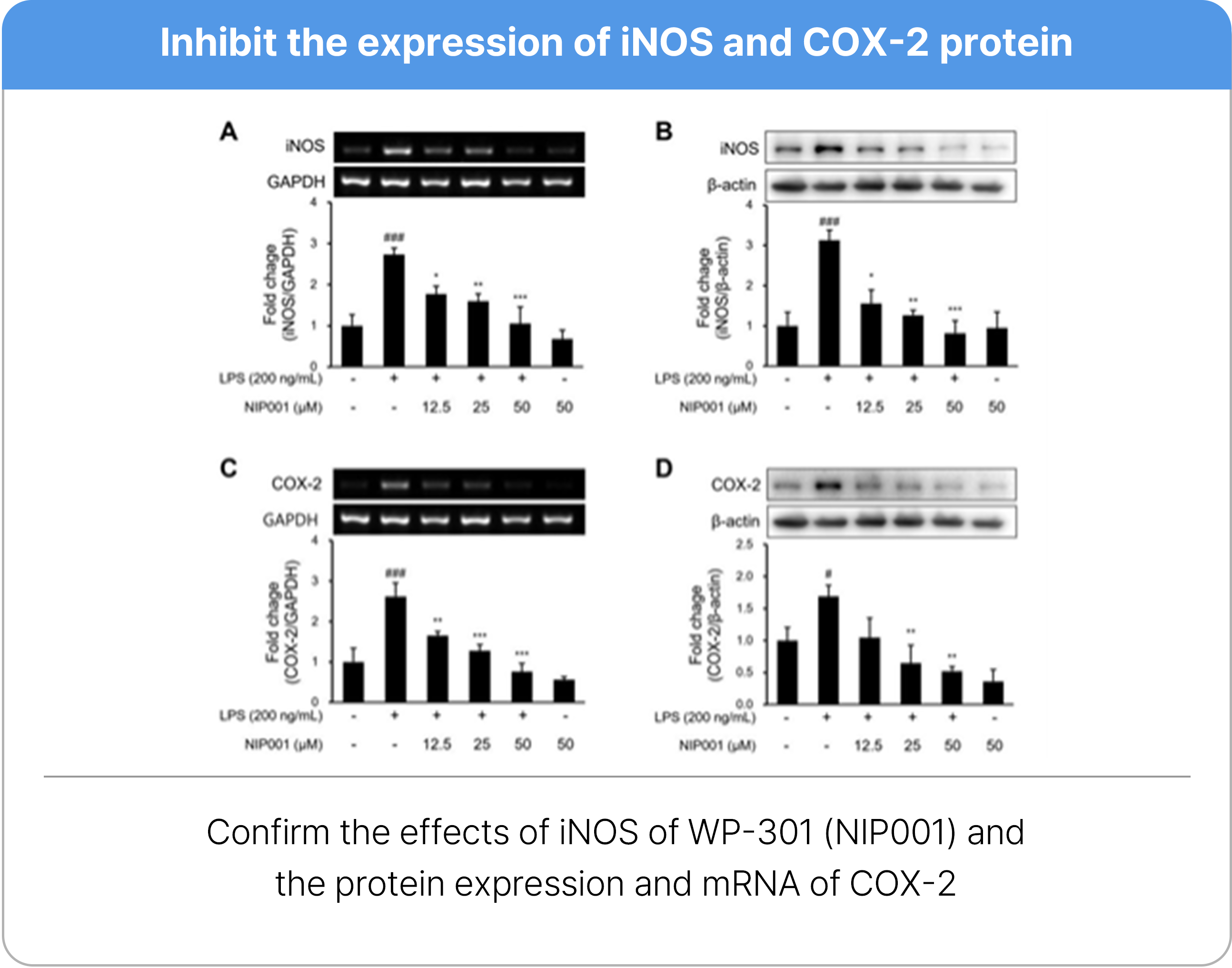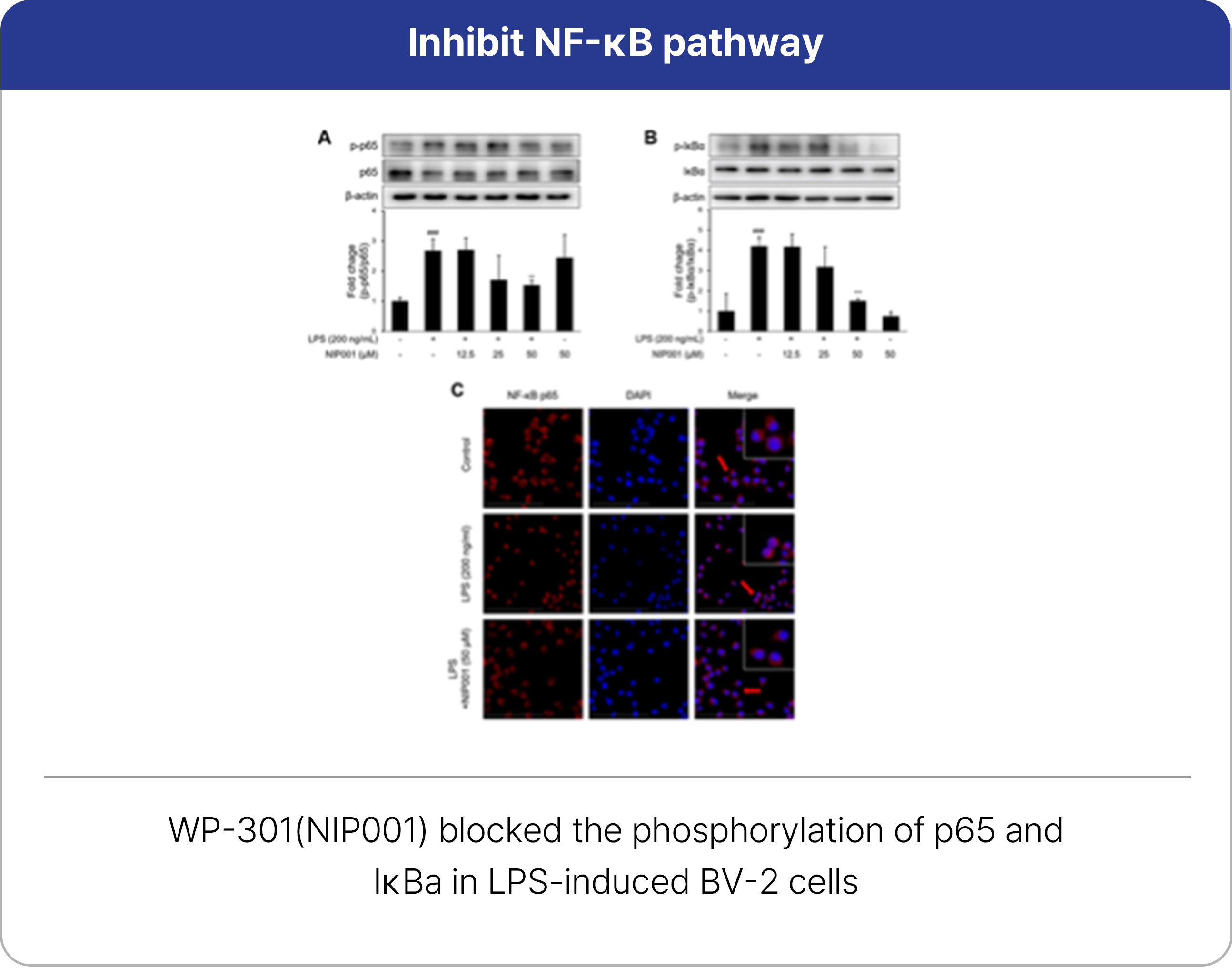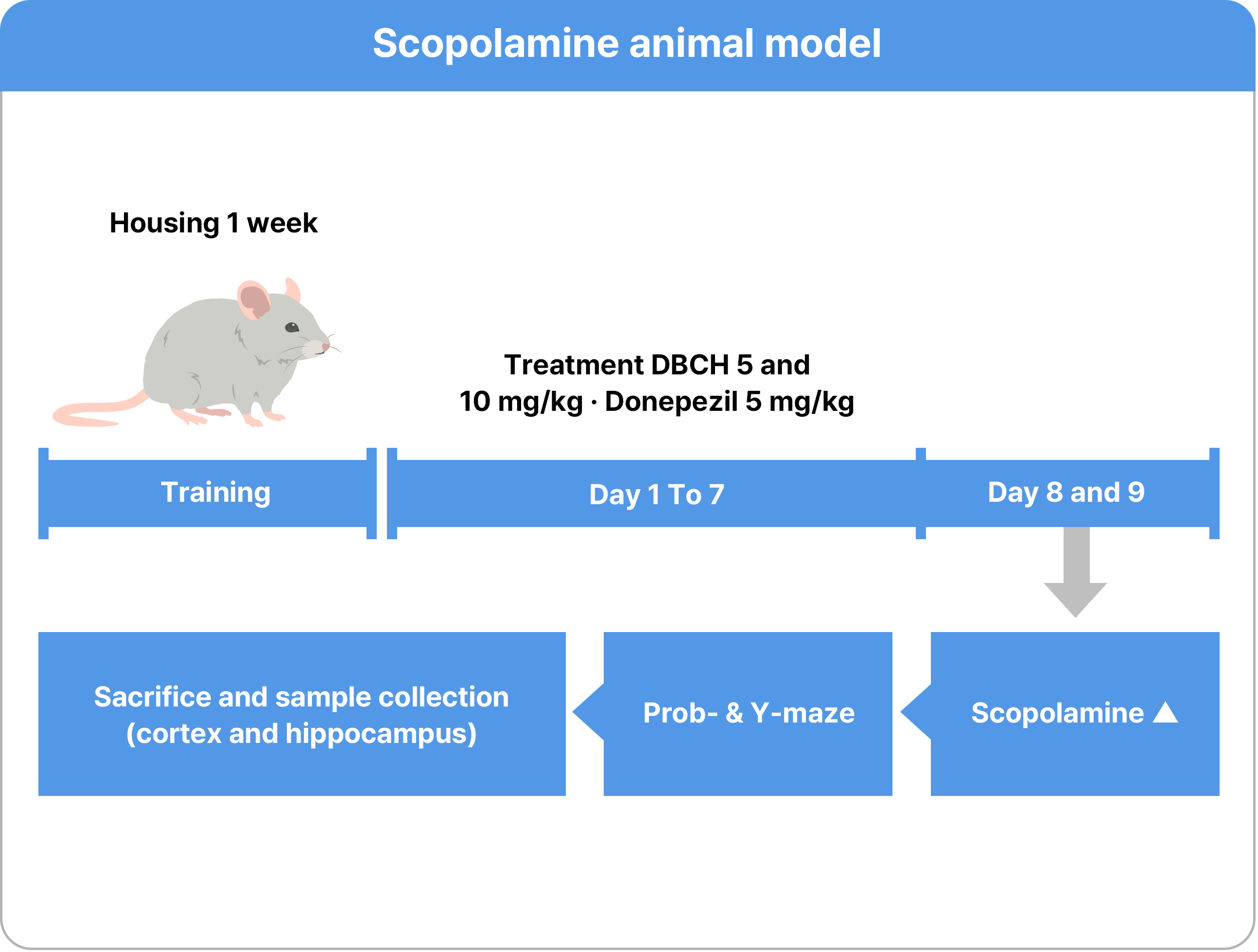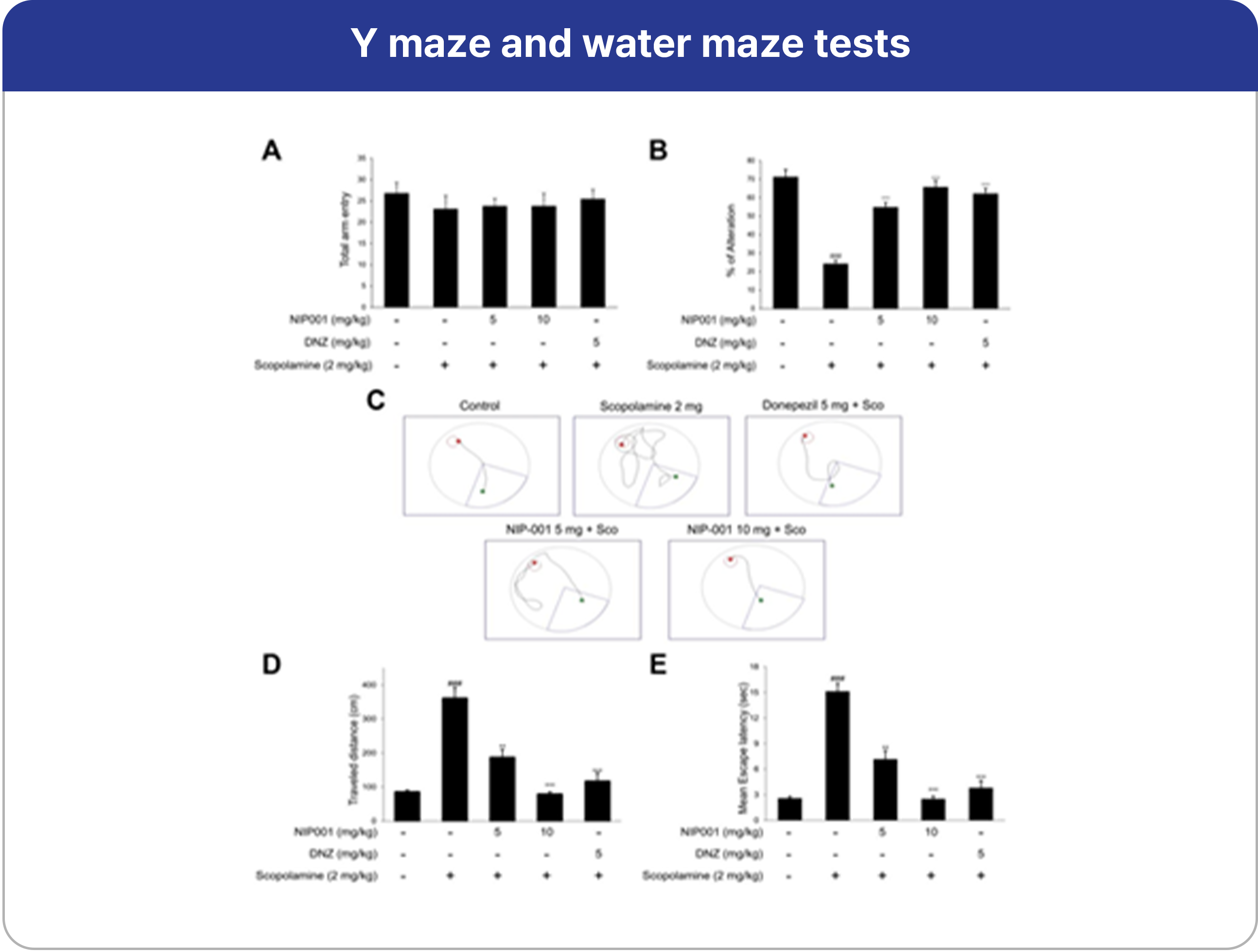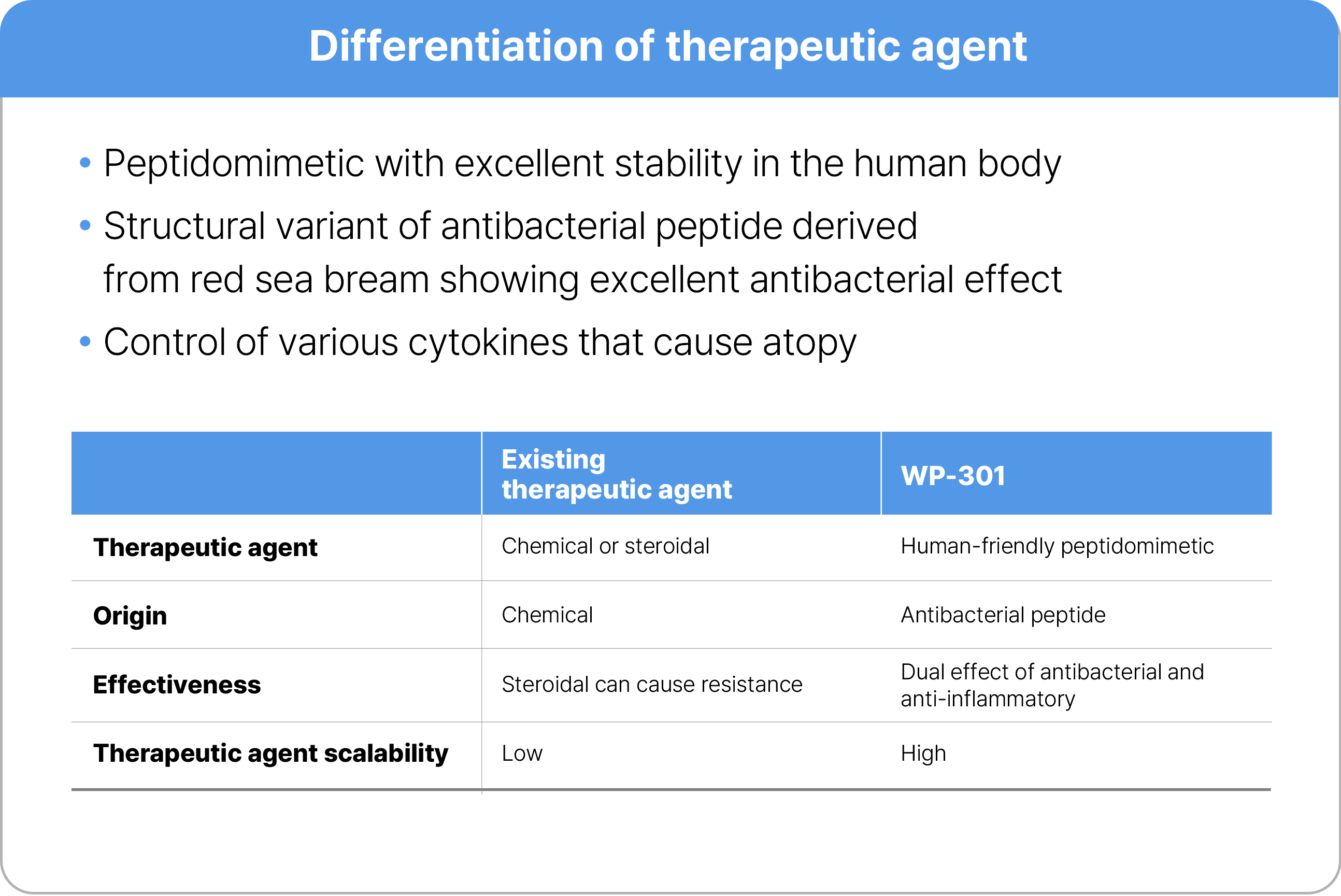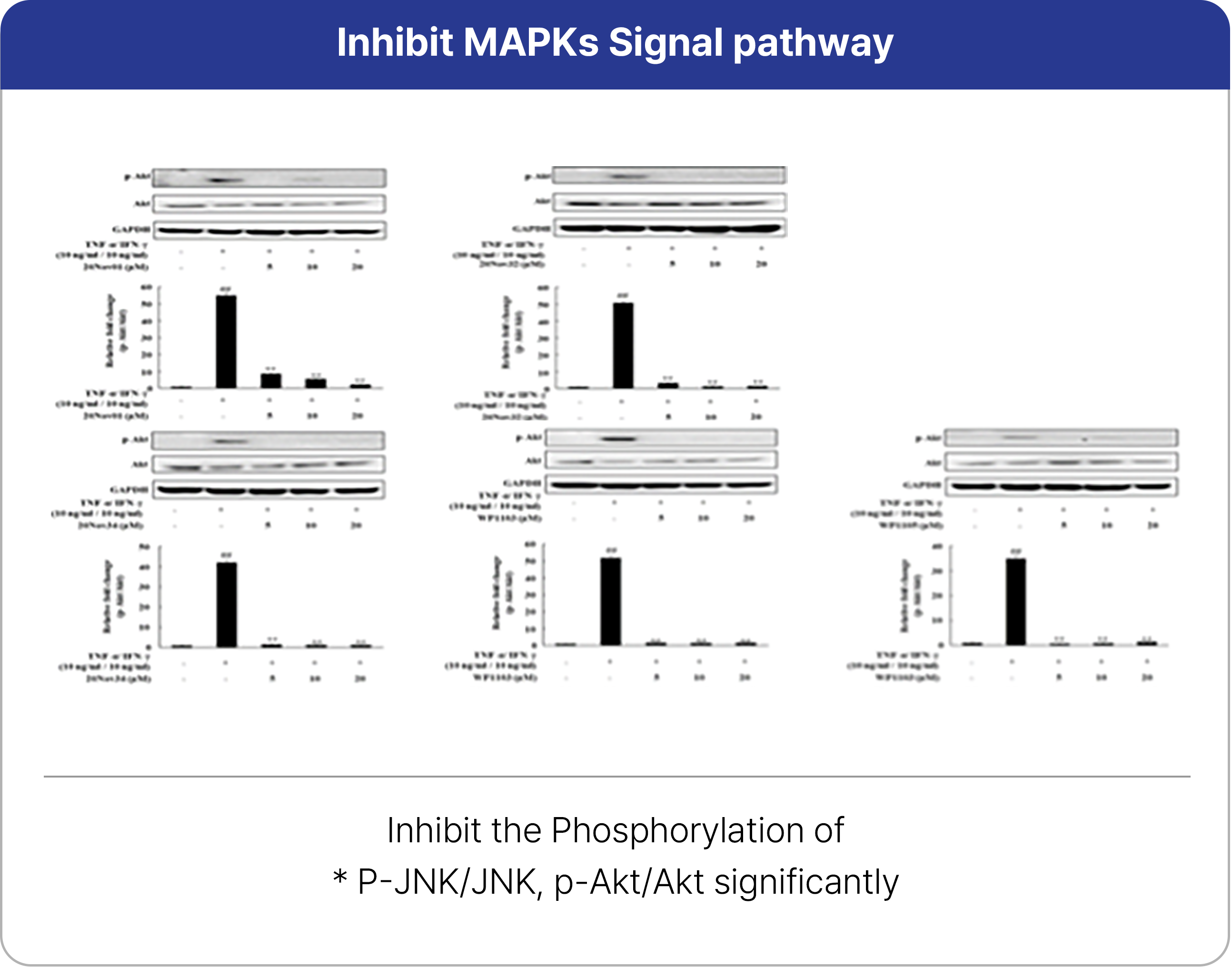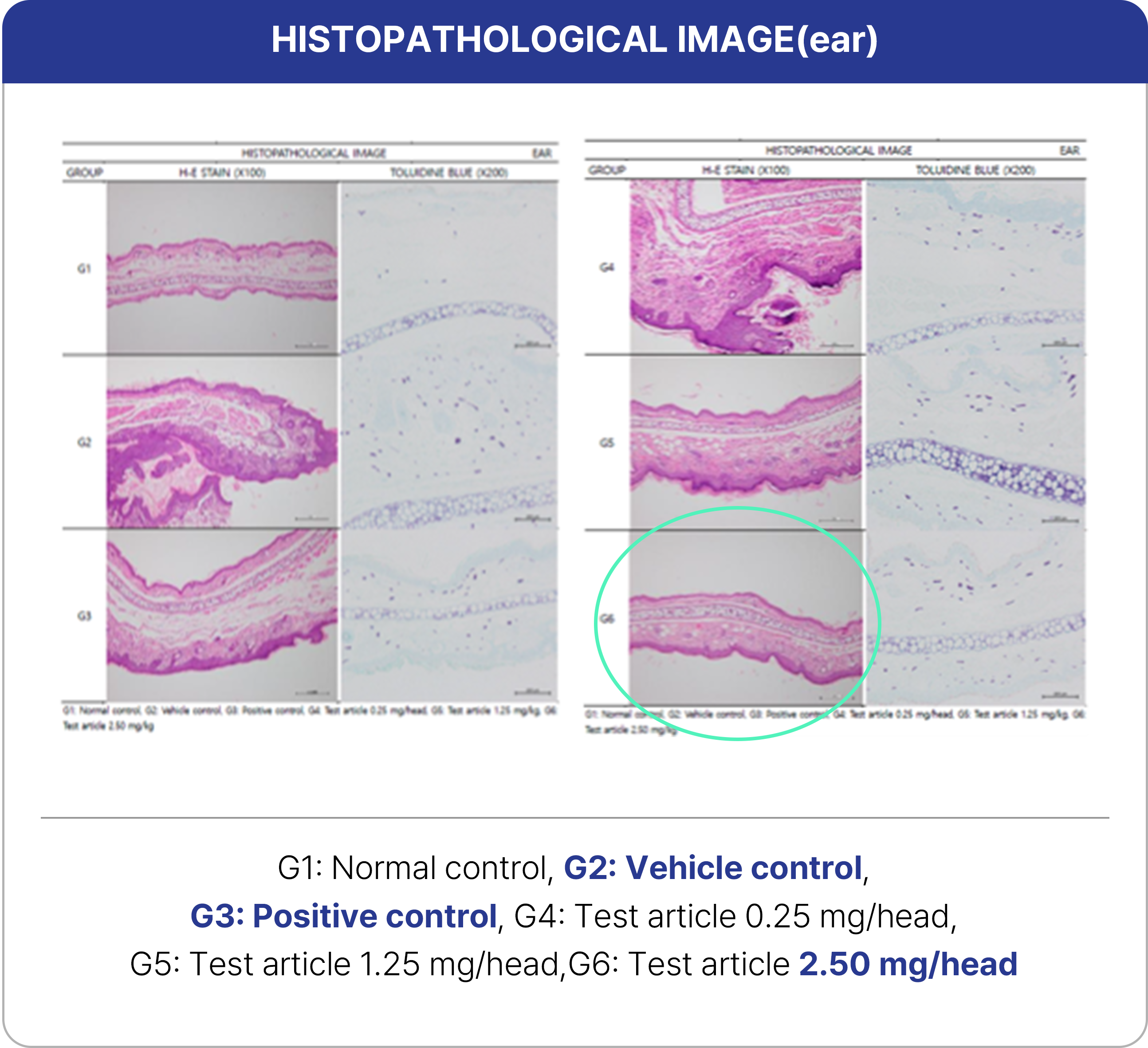New Drug Pipeline
WELLPEP is researching a New Drug Pipeline based on peptidomimetics.
We aim to grow into a global bio company through continuous research and development and technology transfer commercialization of new peptide drug candidates with superior efficacy and stability compared to existing medicines.
We have developed new drugs innovatively in the medical unmet needs area designed based on Peptidomimetic.
Development of multidrug-resistant gram-negative bacteria antibiotics (WP-101), dementia therapeutic agent (WP-301), and atopic therapeutic agent (WP-302) is in the material optimization stage, and non-clinical development is underway.

01. Multidrug-resistant Gram-negative bacteria infection therapeutic agent WP-101
- Independent polymyxin series material
- Peptidomimetic-based peptide new drug candidate derived from Gram-positive antibacterial peptide (approximately 200 designs)
- Excellent antibacterial activity against multidrug-resistant Gram-negative bacteria
Goal of developing therapeutic agent
-
Cell membrane destruction
good antimicrobial effect
-
Drug resistance
superior drug resistance
-
Next generation antibiotics
peptidomimetics with less toxicity
Producing various therapeutic agent candidates based on In-silico, SAR
낮은 용혈 활성과 항생제 저항성 확인
Hemolytic activity and antibiotic resistance
02. Alzheimer's disease therapeutic agent WP-301
- AMP antibacterial peptide new drug candidate that shows strong anti-inflammatory efficacy
- Aim to cure Central Nervous System Through Inflammation Control
| Drug | a major mechanism of action |
|---|---|
| ALZT-OP1a+ALZT-OP1b | Mast cell stabilizer, Neuroinflammatory microglial modulator, and anti-inflammation |
| ANAVEX2-73 | Small-molecule activator of the sigma-1 receptor |
| Azeliragon | Microglial activation inhibitor, antagonist of the receptor for advanced glycation end products |
| Nivadipine | Dihydropyridine calcium channel blocker, Suppress neuroinflammation via P-SYK inhibition |
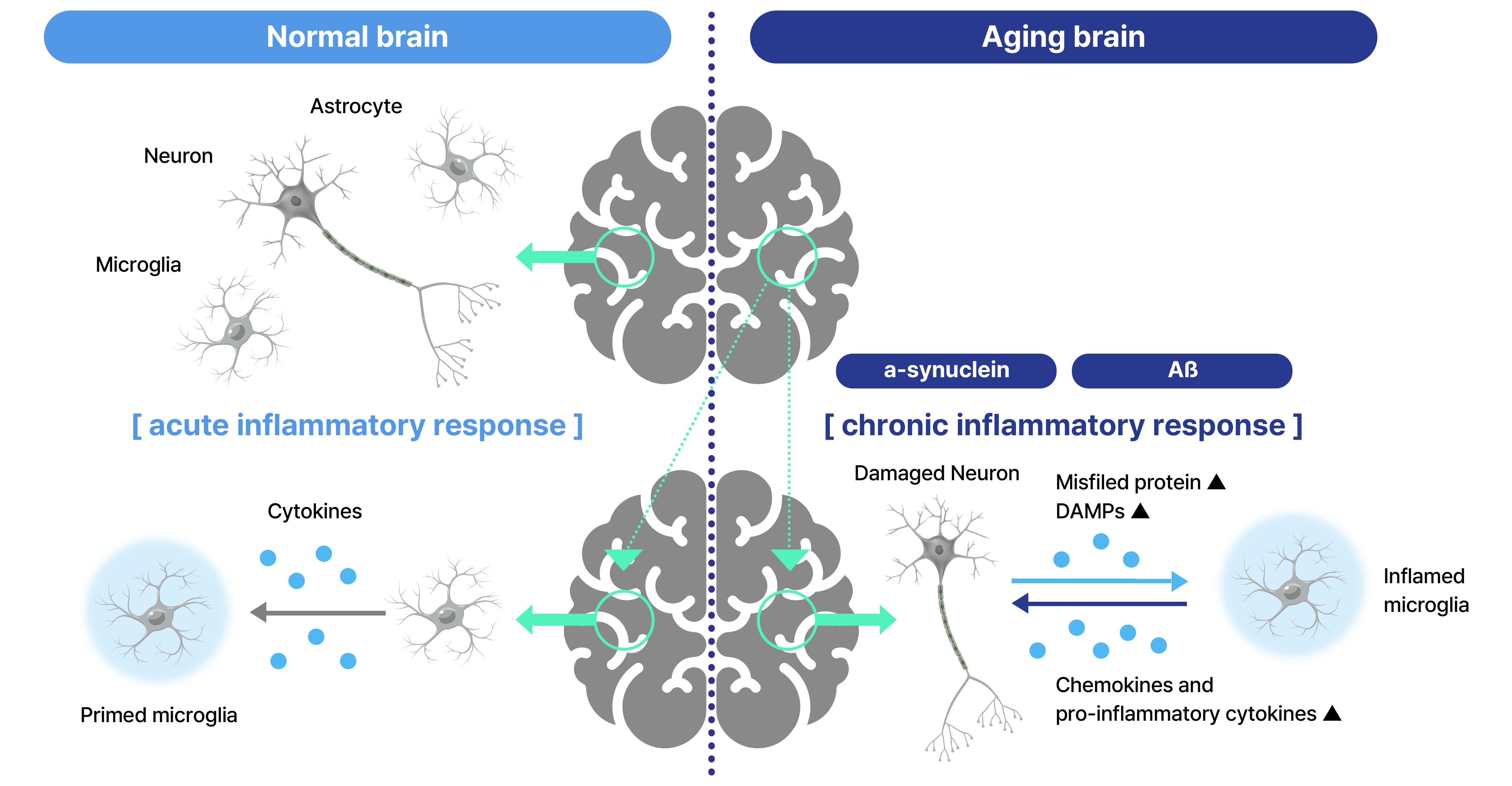
Mechanism of Action
Inhibit the activation of COX-2, iNOS, MAPKs (p38) signaling pathway and NF-κB of WP-301
- PoC test: Evaluate the cognitive function improvement efficacy using scopolamine animal model
- It was judged that it helps improve memory by confirming that the time and distance for finding the platform were significantly reduced in the group administered WP-301
03. Atopy medications WP-302
- AMP antibacterial peptide new drug candidate showing strong anti-inflammatory efficacy
- Structural variant of antibacterial peptide derived from red sea bream
Mechanism of Action
Inhibit MAPKs(p38) signaling pathway of WP-302 and the activation of NF-κB.
- PoC test: Confirm the efficacy in atopic efficacy test using DNCB-induced BALB/c mouse.
- Apply topically to BALB/c mouse for 14 days: Confirm the improvement effect on atopic dermatitis at a concentration of 2.50 mg/head.


